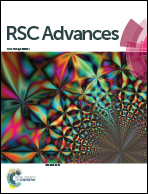Separator modified by Ketjen black for enhanced electrochemical performance of lithium–sulfur batteries
Abstract
A routine separator modified by a Ketjen black (KB) layer on the cathode side has been investigated to improve the electrochemical performances of Li–S batteries. The KB modified separator was prepared by a facile slurry coating method which offers a low-cost approach to solve the difficulties of Li–S batteries. Li–S cells assembled with this KB coated separator present excellent electrochemical performances in comparison with that of cells with a routine separator. The initial discharge capacity reaches 1318 mA h g−1 at 0.1C, and the reversible discharge capacity is maintained at 815 mA h g−1 after 100 cycles at 1C implying high capacity retention. Meanwhile, it achieves a discharge capacity of 934 mA h g−1 even at 2C demonstrating an excellent rate performance. Furthermore, electrochemical impedance spectroscopy (EIS) shows that the KB separator sample displays a lower charge transfer resistance which is beneficial for the electrochemical kinetics. The improved performance is supposed to be attributed to the porous architecture of the Ketjen black (KB) layer on the routine separator, which served as a physical barrier to block dissolved lithium polysulfides and an upper current collector to facilitate the transition of ions and electrons.



 Please wait while we load your content...
Please wait while we load your content...